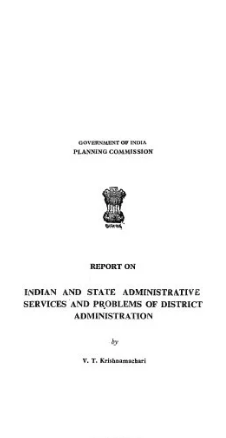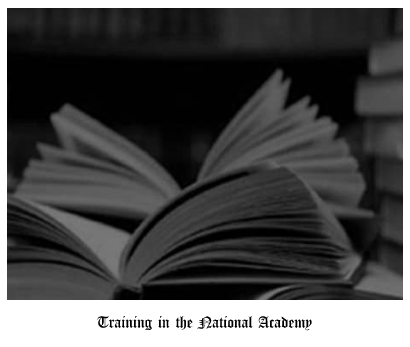Pictures
usda, Public domain, via Wikimedia Commons
SYSTEMS OF TRAINING OF OFFICERS OF INDIAN ADMINISTRATIVE SERVICES
The training system of IAS officers recruited directly in the National Academy is described. The following suggestions are made regarding the National Academy and its courses of training:
To enable IAS officers to gain varied experience, their postings during the first 5 to 6
years may conform to the following pattern:
Practical training ……………………………………. 18 months
Charge of a sub-division………………………………18-24 months
Under Secretary to the State Government and deputy to a head of department (both
these courses of training are equally useful) ………………..18-24 months
Charge of a district…………………………………… Towards the end of the sixth or in the
seventh year of service
Note: - All sub-divisional officers should be actively associated with the community development programme


Reorientation courses of three months’ duration to directly recruited IAS officers with 6 to 10 years’ service and those promoted to IAS from the State Services and short courses, seminars, conferences, etc. lasting a week to a month for the benefit of senior officers need to be specially emphasized in the context of the growing complexity of the administrative problems. Therefore, a regular program should be drawn by the Home Ministry with the assistance of the other Ministries for this purpose after reviewing the facilities available at the Academy, the Central Institute of Study and Research in Community Development, the Staff College at Hyderabad, the Indian Institute of Public Administration, the National Council of Applied Economic Research and other similar institutions.
Systems of Training of Officers of State Administrative Services :
Every State Government should make as accurate a forecast as possible.
The percentage fixed for filling up vacancies in Class I and II by direct recruitment through competitive examination varies in different States.
Direct recruitments have been irregular in the past, and in some States, they had been kept in abeyance for as long a period as 15 to 20 years. Therefore, it is recommended that all State Governments amend their rules to enable a minimum of 50 % of the State Civil Service Class I posts. In addition, 50 % of the State Civil Service Class II seats are to be recruited by competitive examination held by the State Public Service Commissions. Furthermore, regular annual reviews should be held to make such recruitment according to a carefully devised program.
Block development officers belonging to State Civil Service Class II are eligible for promotion to the State Civil Service Class I. Block extension officers promoted as block development officers may be promoted to the State Civil Service Class I or in their parent departments according to their fitness. These are being steadily replaced by officers corresponding to State Civil Service Class II, and this process should be completed soon.
It is suggested that a group might be set up in the Planning Commission with representatives of the Ministries of Home Affairs and Community Development, Panchayati Raj, and Cooperation. This is to keep in continuous touch with the progress of recruitment to Class I and Class II Services in the States and offer such advice as may be needed from time to time.
Like the IAS officers, State Civil Service officers should learn important categories of work by holding the concerned posts and doing casework, and receiving special instructions on law and order problems.
The establishment of training institutes in States where there are none, either individually or jointly for two or more States, with the help of the National Academy is suggested. The recommendations regarding the institutional training are
a.) a common foundational course for officers of State Civil Services and officers of State technical service;
b) Instructions in the laws and regulations etc., about their future services for the direct recruits to the State Civil Services; and fixation of the training period in the institutes for these officers at six months.
c) The need for coordination between the State training institutes and the orientation and study centers run by the Ministry of Community Development, Panchayati Raj, and Cooperation is stressed.
d) The organisation of refresher courses for State Civil Service officers who have put in 6 to 8 years of service in the State training institutes and Conducting of seminars and refresher courses for senior officers at the Central institutions are suggested.